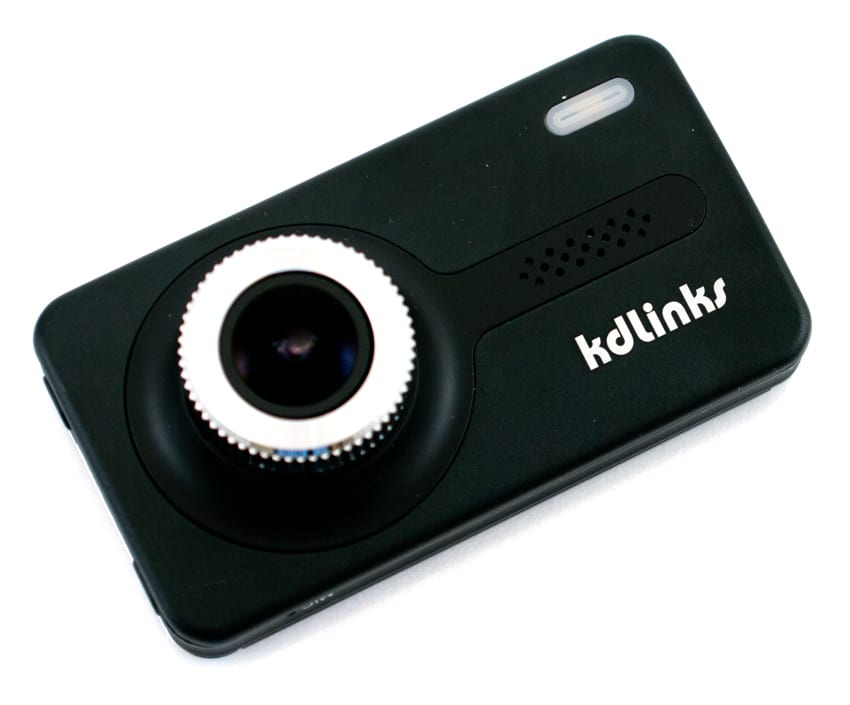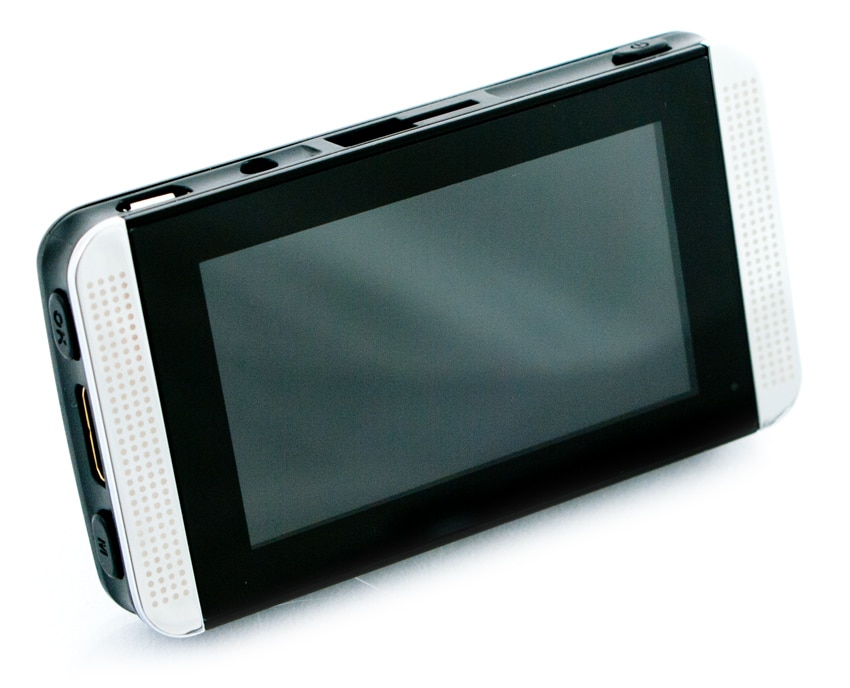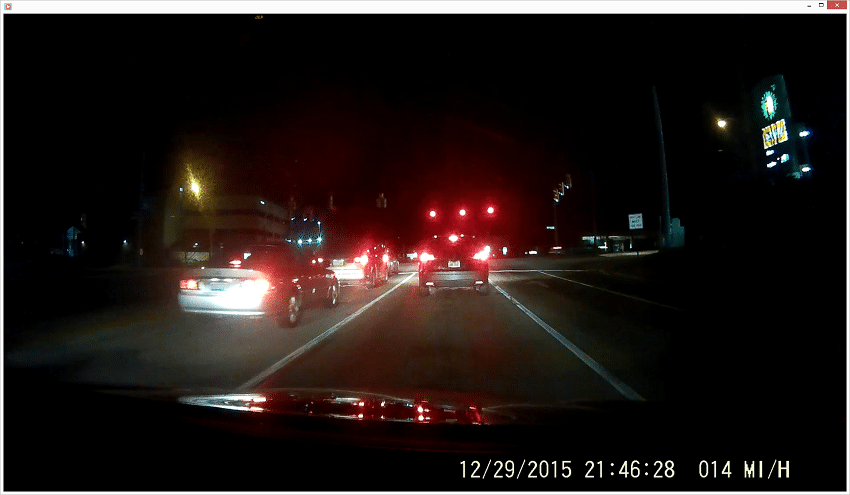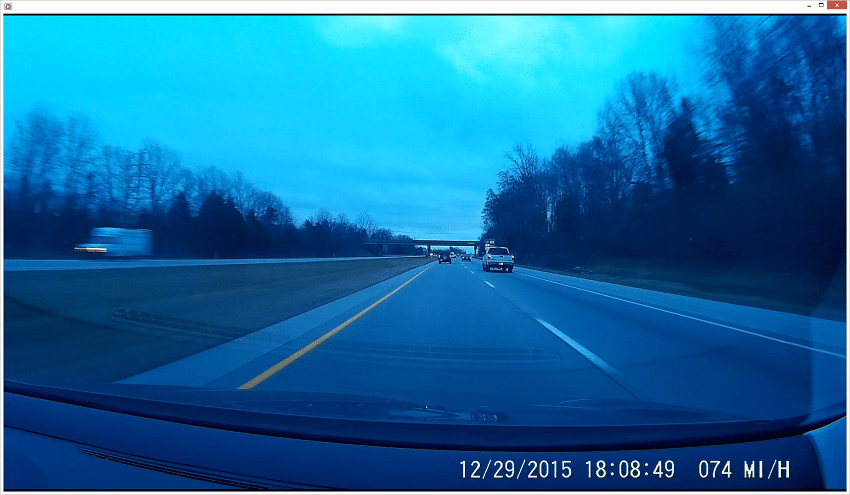 The KDLINKS X1 is an affordable, yet high-quality, vehicle dashboard camcorder that features full-HD 1920×1080 video at 30fps as well as a fairly wide lens angle of 165°. While this device is primarily designed as a safe-guard against insurance fraud by recording your commute, for our purposes, we are using it for video creation when testing things like memory cards (e.g. microSD), video archival solutions and as part of our larger Internet of Things (IoT) type projects. As content around these types of solutions grows, so does the demand for storage space on the edge and in the core; especially considering the footprint of high-resolution recordings.
The KDLINKS X1 is an affordable, yet high-quality, vehicle dashboard camcorder that features full-HD 1920×1080 video at 30fps as well as a fairly wide lens angle of 165°. While this device is primarily designed as a safe-guard against insurance fraud by recording your commute, for our purposes, we are using it for video creation when testing things like memory cards (e.g. microSD), video archival solutions and as part of our larger Internet of Things (IoT) type projects. As content around these types of solutions grows, so does the demand for storage space on the edge and in the core; especially considering the footprint of high-resolution recordings.
The KDLINKS X1 is an affordable, yet high-quality, vehicle dashboard camcorder that features full-HD 1920×1080 video at 30fps as well as a fairly wide lens angle of 165°. While this device is primarily designed as a safe-guard against insurance fraud by recording your commute, for our purposes, we are using it for video creation when testing things like memory cards (e.g. microSD), video archival solutions and as part of our larger Internet of Things (IoT) type projects. As content around these types of solutions grows, so does the demand for storage space on the edge and in the core; especially considering the footprint of high-resolution recordings.

For its part, the KDLINKS X1 features night-vision by f1.6 Six-Glass lenses as well as a unique Wide Dynamic Range (WDR) video system. It also comes with a built in GPS module, which allows users to record embedded GPS data into their video clips, as well as monitor a vehicle’s location, speed, and route on Google Map via the bundled KDLINKS Player Software. Another handy feature of the X1 is its use of a micro-USB port both for power and for transferring files to computers, the latter which eliminates the need of both a card reader and microSD slot. In addition, it ships with 8GB micro SD card, making it ready for use right out of the box. The X1 also is equipped with an emergency lock button and an accident auto detection feature (via G-Sensor), which locks current video files in order to prevent accidental deletion of important clips.

Going for roughly $170 on Amazon, the X1 is also backed by a 1-year warranty.
KDLINKS X1 Specifications
- Processor: Novatek NT96650
- CMOS: Aptina AR0330
- Channels: 1
- Screen: 2.7″
- GPS
- G-Sensor
- Wi-Fi
- Parking Mode
- Lock Files: Auto or Button
- Video:
- Max Resolution: 1080p 30fps
- Max Bitrate (Mbps): 12
- Video Format: MOV
- Compression: H.264
- Diagonal Viewing Angle: 165°
- Storage:
- SD Card Type: MicroSD
- Max Size (Spec): 32GB
- Max Size (User) : 32GB
- Size (mm): 89 x 58 x 38
- Power Supply: 5V
- Battery: 120mAh
- Warranty: 1-year
Design and build
The KDLINKS X1 looks like a compact digital camera that was very popular right before the proliferation of smartphones. On the camera itself, the lens takes up a majority of the left hand side on the front of the device. The top of the device has a power button above the lens and an input for the GPS and USB connection on the other side. The bracket connects to the center of the device, with the other end having a suction cup to attach to windshields.
The entire back of the camera is taken up by the LCD screen. On the right hand side is a slot for the microSD card and two navigation buttons that also zoom in the camera. The opposite side has another USB interface for connecting with computers and an OK button and a Manual button (M).
As far as the camera’s usability goes, the X1 employs pretty basic interface, since at the end of the day recording video without user-intervention is its ultimate goal of a dashcam.
Video Recording and Storage Footprint
Recording a 1080P 30FPS video stream has a significant storage requirement. At its highest quality setting the KDLINKS X1 Dashboard Camera records videos split into 5 minute segments, each with a size of 470MB. With a 32GB storage card size, this offers a continuous recording loop of just over an hour at maximum quality settings. This data footprint isn’t unique to this particular dash cam, policy and military using body cams and a variety of surveillance solutions at the edge all face similar problems.

With the hourly loop time depending on card size and recording resolution, the “crash” detection feature comes in pretty handy during daily usage, where recordeings get locked so they aren’t deleted and recorded over by accident. To push into longer recording times, resolution can be dropped to further extend how long recordings are saved before being offloaded or recorded over again.

As a content generation device and flash card stressing device, we’ve used the camera to record around town, which has been helpful as we create video libraries used for achival storage systems and burn in memory cards. Unique and non-duplicated video is crucial for many of these platforms so we don’t get artificially high compression or deduplication rates. For MicroSD card testing, video recording devices put a constant stress on flash that some cards will handle and others flake out under continuous write streams. To that end the KDLINKS X1 has been quite helpful addition to the StorageReview lab as we continue to develop a bench of edge to core use cases for storage.
Sign up for the StorageReview newsletter
